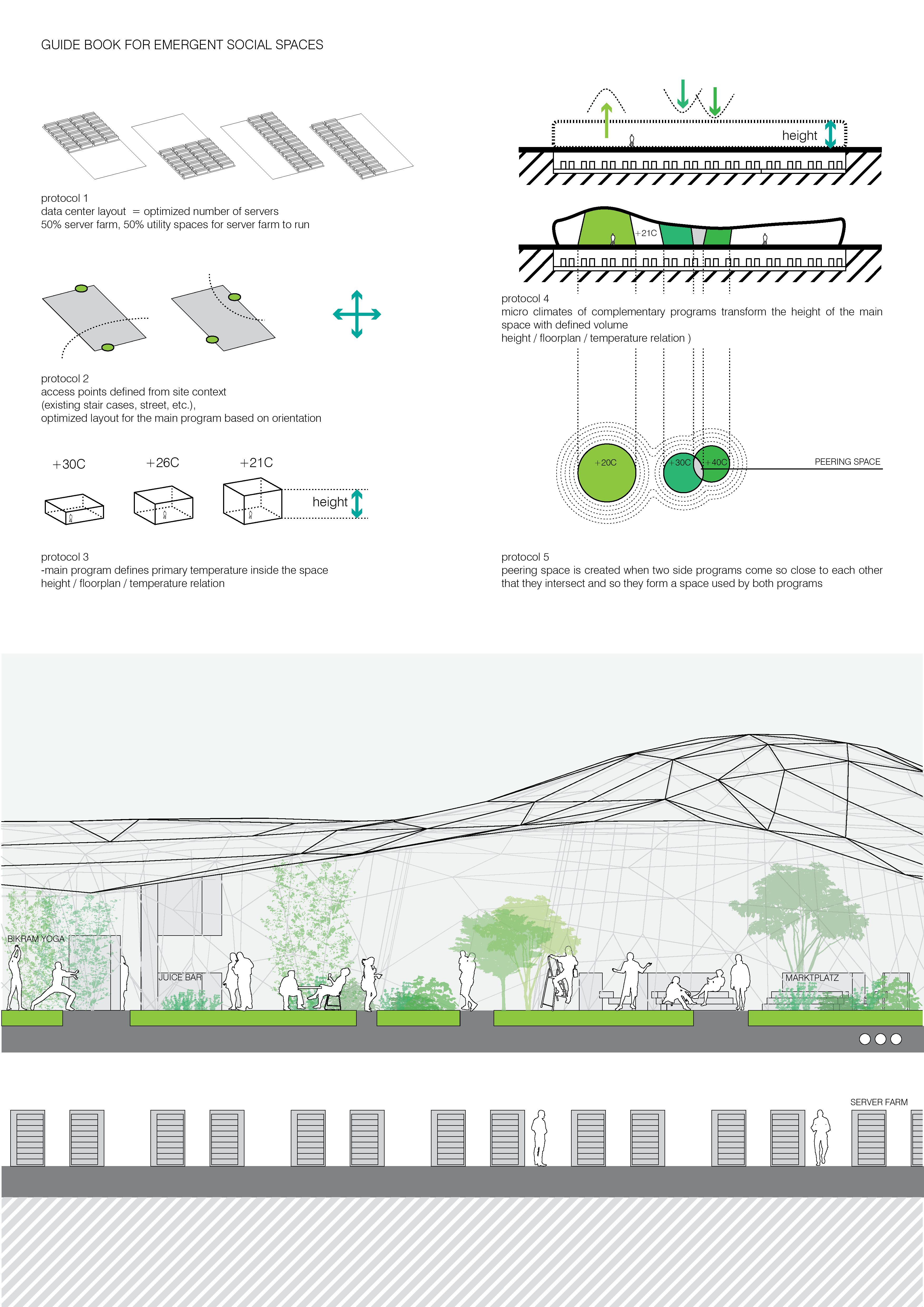A guide book to architecture and the social city
Architecture and Critical Spatial Practice
Städelschule Architecture Class
master thesis project 2013

Latencity-a guide book to infrastructure and the social city presents a research project under the umbrella theme of Stealth Architecture in which, as a subtheme, Frankfurt’s data center infrastructure is used as a trigger for a strategic urban design proposal rethinking the social city.
The immersive study was initialized by the finding that, on a global scale, Frankfurt has the largest Internet Exchange Point by peak traffic.
The project proposes that, today, data centers – rather than being planned as huge and anonymous infrastructural deadzones – should be understood as a potential: decentralized activation points that foster a more integrated approach to urban planning processes.


A composite proposal
This composite proposal is taking one feature of the data centers : the waste heat they produce and using it as a facilitator for new social spaces. The idea was to design a urban strategy using the waste heat of the data center facilities.
More that 50 percent of the heat produced in data centers is waste heat, emmited into our enviroment, other 50 percent is used to cool down the servers after passing through various cooling systems. This heat with carefull planning can be captured and distributed.
In the future, instead of thinking of data centers as killers of urban life, they can be considered as acctuators. What if this data infrastructure can be used to produce and finance a new social space?The new typology could be devised, as the data centers could enable new social spaces, facilitated by the waste energy that the society produces with constant accumulation of data.
As a key part of the strategy, LOW-LATENCY TAX was devised as a tool to move data centers into city centers so they could be physically close to the banks, investment companies, stock exchanges etc. This programmatic rule would include the design of the data center to collect excess heat to produce new social space as an almost direct product of data.

︎